Into Darkness
A Laotian Subterranean Packrafting Adventure
Written by Claire Cripps // Photos by Braden Gunem
Amongst broken language conversations, giant smiles and healthy servings of Beerlao on ice, we were fortunate enough to connect and engage in fascinating encounters with these resilient individuals. Surviving, just as people survive all around the world. Beautiful humanity, at its core.
To South-East Asia we went, meandering through the north-east hills of Thailand, soaking in every bit of charm we could find. From limestone karst caves to bowls of khao soi soup in rustic kitchens, we sought the most luscious landscapes and people we could find. Perhaps a bit foolish, we deemed our Kokopelli packrafts essential components in our ventures. It was possibly the most parched dry season there ever was in the region, and when our first ‘river trip’ involved a week of more boat-dragging than actual boating, we were left just a wee bit disheartened. But, thankfully, that didn’t last too long.
One evening, we met two Australian men who have explored the rivers of South-East Asia for over 30 years. Maybe one too many whiskies in, we were lamenting the current flow levels. One of our new buddies alluded to a jungly river in a remote region of Laos that would almost certainly have more water, but was a true bitch to get to. Casually, he threw in the detail that this river happened to flow through possibly the largest river cave in the world. For what it was worth, he told us the name of this river, a major tributary to the mighty Mekong: the Xe Bang Fai. Our beta, vague at best, was solid enough to warrant a week-long journey to this alien region of Laos, where we would then attempt to figure out how the hell to even make it to the put in.
We spent two days on a quest for a bus driver who had even heard of the biggest town close to the river; better yet, who would actually drive us there.
‘Boulapha?’ (Insert shoulder shrug and furrowed brow here.)
‘Yes! Yes! Boulapha!’ (Insert another shoulder shrug, head shake no.)
Defeat.
Finally, one gentleman responded to our request with a hearty ‘Ohhhh, yes! Yessss! One hour! Leaving in one hour!’ And just like that, we were tossed into an old makeshift poultry bus next to a box of cranky chickens and 10 other people, headed who knew where.
Boulapha. Getting dumped with dry bags and packrafts seemed peculiar in this land with no signs of a river, like showing up to a swimming party sans bikini. The village appeared barren, uninhabitable even, both in environment and culture. Remnants of a war-torn region resonated, evidenced by foreign aid posts with individuals donning hazmat apparel. They were working to complete one task: detonation of the nearly 75 million leftover U.S. unexploded bombs (UXOs) from the Vietnam War. With Laos being the most heavily bombed country in the world, this region was hauntingly saturated with UXOs left live and active underground. It made sense now why this village felt like a land so forgotten. I felt embarrassed at times to think the locals might associate us with the shady penumbra of our country’s past. But, amongst broken language conversations, giant smiles, even bigger strokes of empathy, healthy servings of Beerlao on ice, and of course a Laos pop music dance party here and there, we were fortunate enough to connect and engage in fascinating encounters with these resilient individuals. Surviving, just as people survive all around the world. Beautiful humanity, at its core.

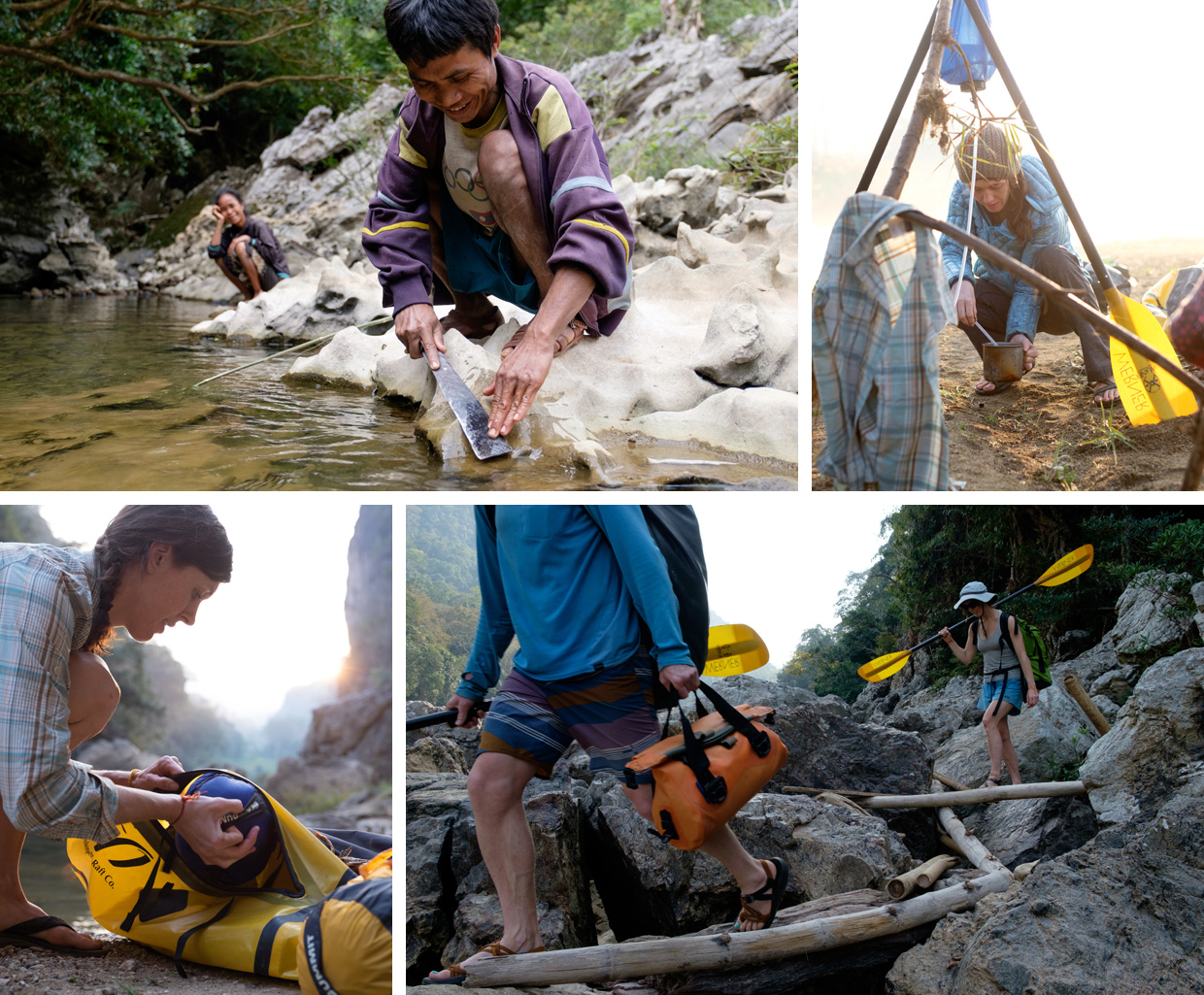
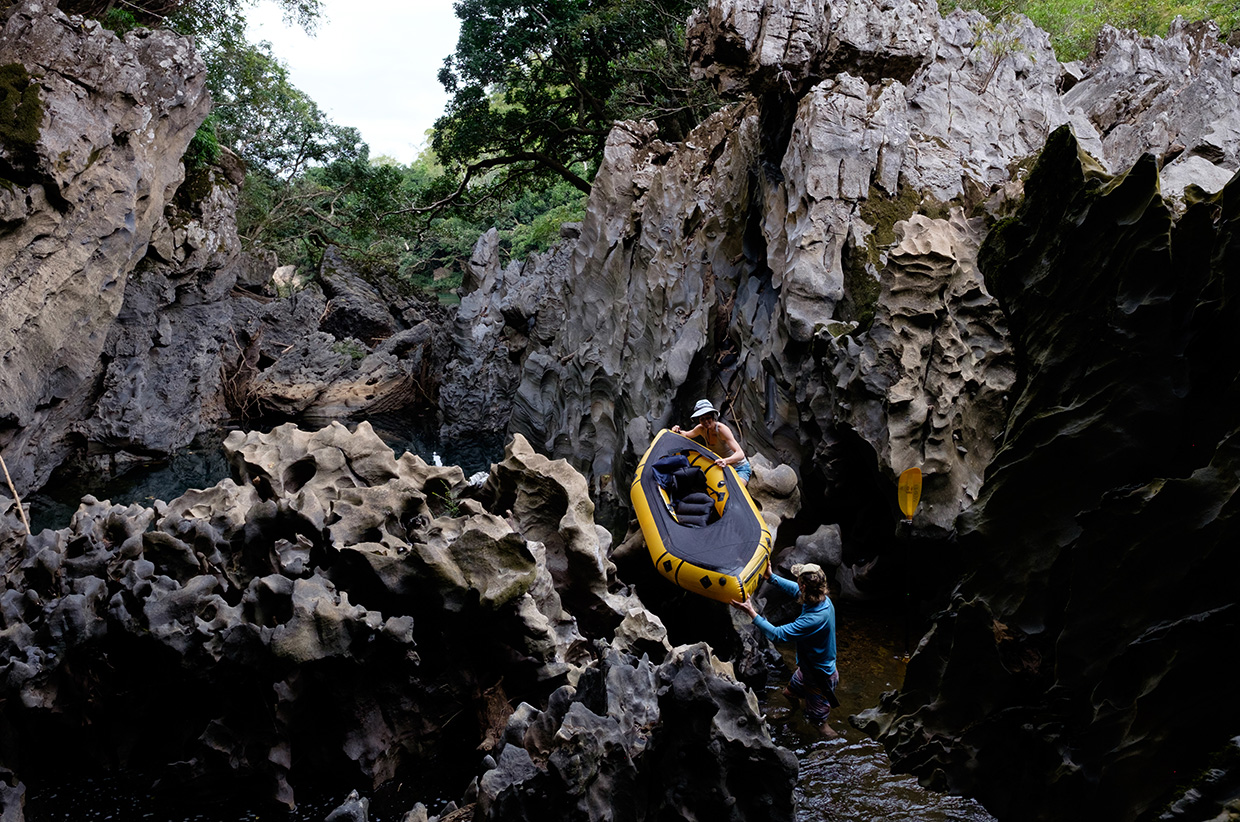
Our attempts to hitchhike to the river began a new routine in Boulapha – each morning, an ungodly amount of Laotian pho fuelled us at the kitchen of one of the two older village ladies, and then we’d attempt to hunt down a farmer arriving to town on a mechanical tractor apparatus. Noticing at least one a day, we dubbed this mode of transportation the ‘Iron Ox’. We’d beg said farmer for a ride to a village 30 miles away by drawing a map in the dirt. This would typically lead to the giggles, the shoulder shrugging, and eventually giving up catching a ride for the day.
But on day seven, after waltzing through the jungle one eerie evening, treading lightly to avoid being blown apart into tiny American tourist fragments, we finally nailed a tractor ride. The daunting journey to Xe Bang Fai had challenged us all the way to the spot we’d marked on our Gaia GPS app as ‘Maybe the put in?’. Now we heard the whooshing of the river a couple of hundred feet below us. Game on.
We inflated the packrafts. In less than a mile, the surroundings would morph from dusty farmland to the lush, theatrical jungle we came for. Anticipation of an unknown journey was so overwhelming, I couldn’t help but jump up and down. I thought back to the advice the Australian had given us: ‘Everything can be portaged…’. At least, I thought that’s what he had said.
At a higher flow, this river would satisfy as thrilling Class II/III and a few IV boulder garden runs of fun. At the current level, we had over 10 portages. At one portage point, Braden suddenly stopped, dropped his boat, and frantically waved me down like a wild hyena. I hopped across boulders, expecting to come across a treasure chest, perhaps. Getting closer, I spotted the dead 12ft python Braden was losing his mind over. Its swollen, slithery body wobbled back and forth with the current of the river; it was evident that this guy had met its death at the unpassable sieve where it lay. His belly appeared full, perhaps after a feast of river jungle rat. At least he died fat and hopefully happy. It was a reminder of the respect we should have for the power and grandeur of this mighty river, and that we too were at its mercy.
Drifting downstream as pioneers experiencing Xe Bang Fai for the first time, we relished the primal howls of primates, the jazzy tunes of tropical birds, the babbling of tributary creeks. One foggy morning, an old man paddled his handmade bamboo raft across the river to collect a net he had placed there the night before. Net full of tiny fish, he hobbled through our camp quite satisfied. We offered him a pack of cigarettes, but he was far more interested in the squash vegetables we had obtained back in the ‘big city’ of Boulapha. We came across a young couple at another portage, a man fishing with a handline reel constructed out of a piece of bamboo. His wife smoked a pipe while tending to their campfire, waiting patiently to prepare for their barbecue fish date night.
Drifting downstream as pioneers experiencing Xe Bang Fai for the first time, we relished the primal howls of primates, the jazzy tunes of tropical birds, the babbling of tributary creeks.
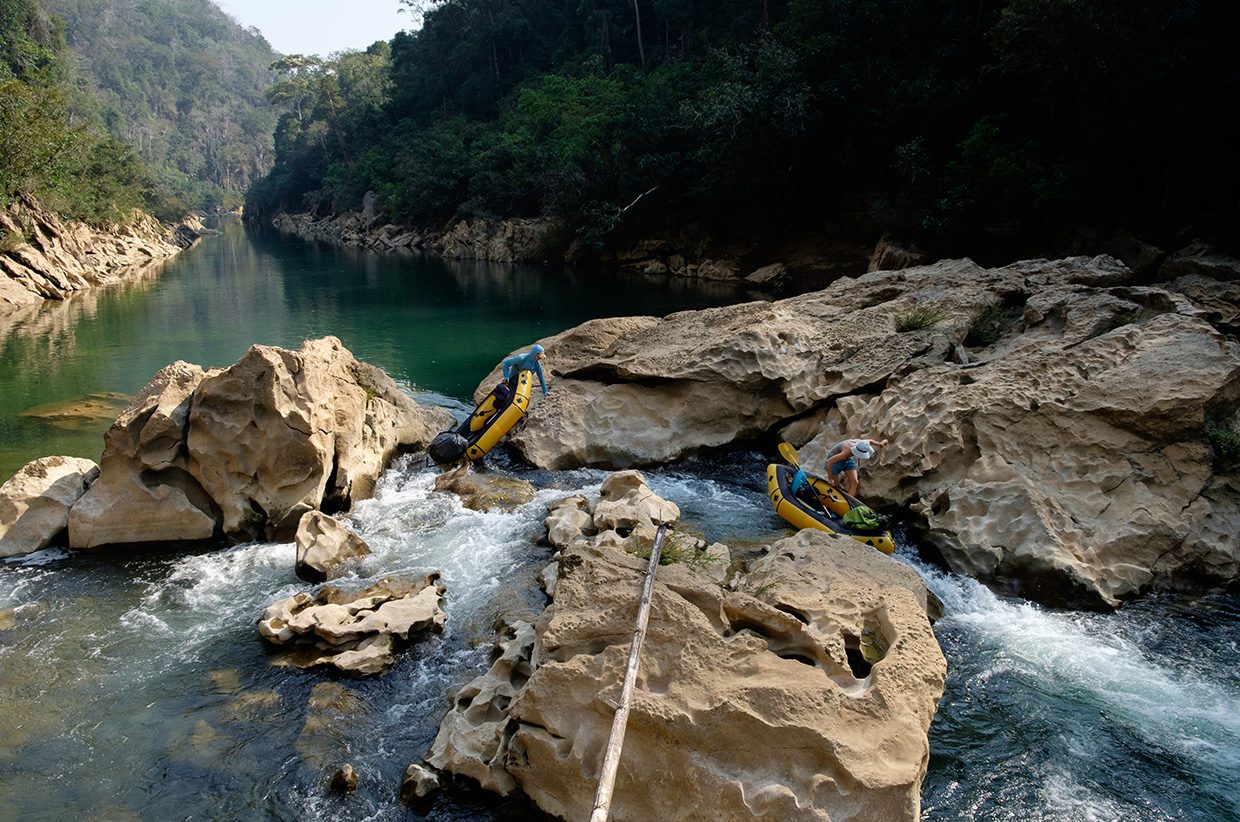
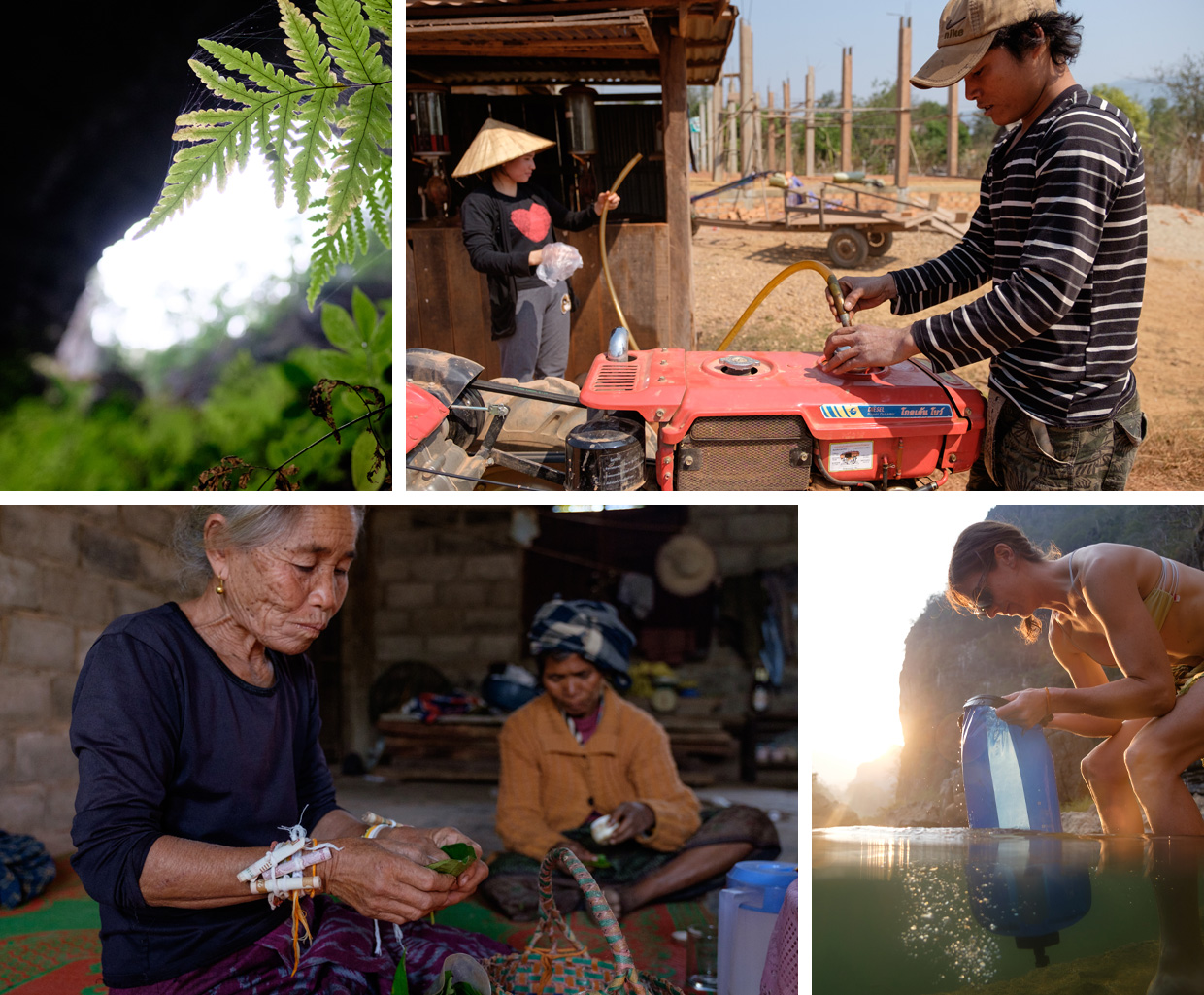
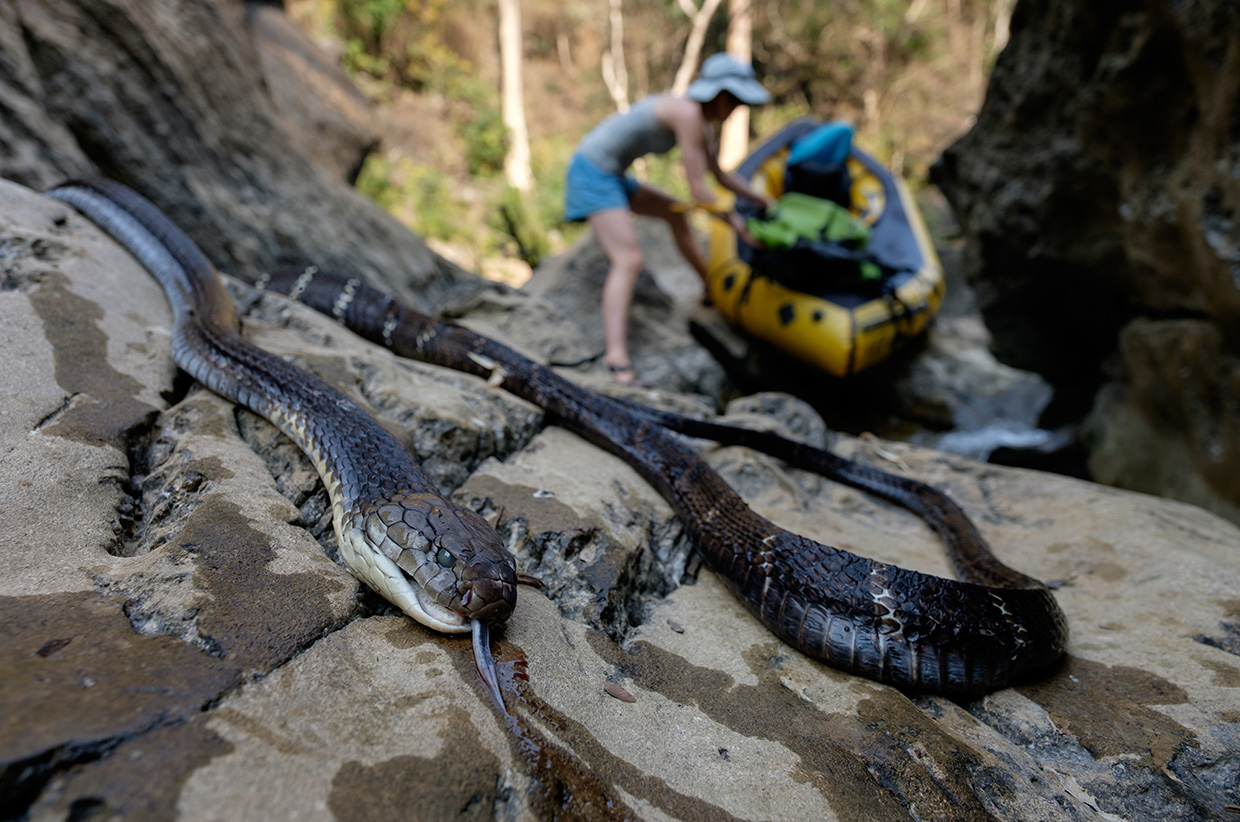
No expectations could have truly prepared us for our venture into this cave. I felt goosebumps erupting on my skin the first time I heard the roar of rapids from within.
At last, the day came we had long anticipated. We had spent many hours in Thai street markets haggling with vendors to prepare for it. Braden pulled a tangled pile out of his packraft, containing the precious items we desperately needed. Lights. It was time to enter the cave.
Prior to putting in on the river, we made a village stop at the cave’s exit. It was here that the locals of a village called Non Ping had started conducting tours a few years ago, exploring the final 2km upstream of the cave. The guided tour ended where the first (or in our case, the last) rapid began. We planned to explore the entire length of the cave, not just the end of it. We bought our permits from the Non Ping guides with the intention to visit them at the cave’s exit a few days later. It wasn’t worth explaining that we planned to explore it backwards.
Many Laotians in the area believed this cave, Tham Khoun Xe, was inhabited by spirits. Some idolised it, some feared it, but everyone in the vicinity who knew of its existence respected it. Very, very few actually entered it. The guides of Non Ping relayed a story of some villagers that climbed to its heights to gather swallows’ nests. These unfortunate souls slipped at the top and fell to the ground but, miraculously, sustained no injuries. Villagers hid in the cave during the Vietnam War, a respite from the chaos and bombings near the perimeter.
No expectations could have truly prepared us for our venture into this cave. The entrance… IMMENSE. I felt goosebumps erupting on my skin the first time I heard the roar of rapids from within.
‘What the hell are we thinking – we’re going to run rapids in the dark?’
The reality of this situation hit. Turning back at this point would be a bona fide pain in the ass, if even possible. The next 7km required keen attention, and I wished for my eyeballs to turn into Superpower Night Vision orbs just for the next 12 hours. Denied.
We paddled inside, our street-market-haggled head lamps leading the way. The first chamber felt like a vortex, a giant wind resisting us, perhaps urging us to turn back. Just as our eyes adjusted to the dark, we entered the next room; one with limestone walls that were easily 100ft tall and wide. A beam of light shone down onto us for a moment as we entered a room that was partially collapsed. But, the further we paddled, the louder the sounds became from the bowels of the cave. And then, there it was before us, awaiting us in the next chamber: our first rapid.
We spent more time than we should have scouting this Class II rapid. We eventually ran it, screaming the entire time, eyes wide shut preparing for the abyss.
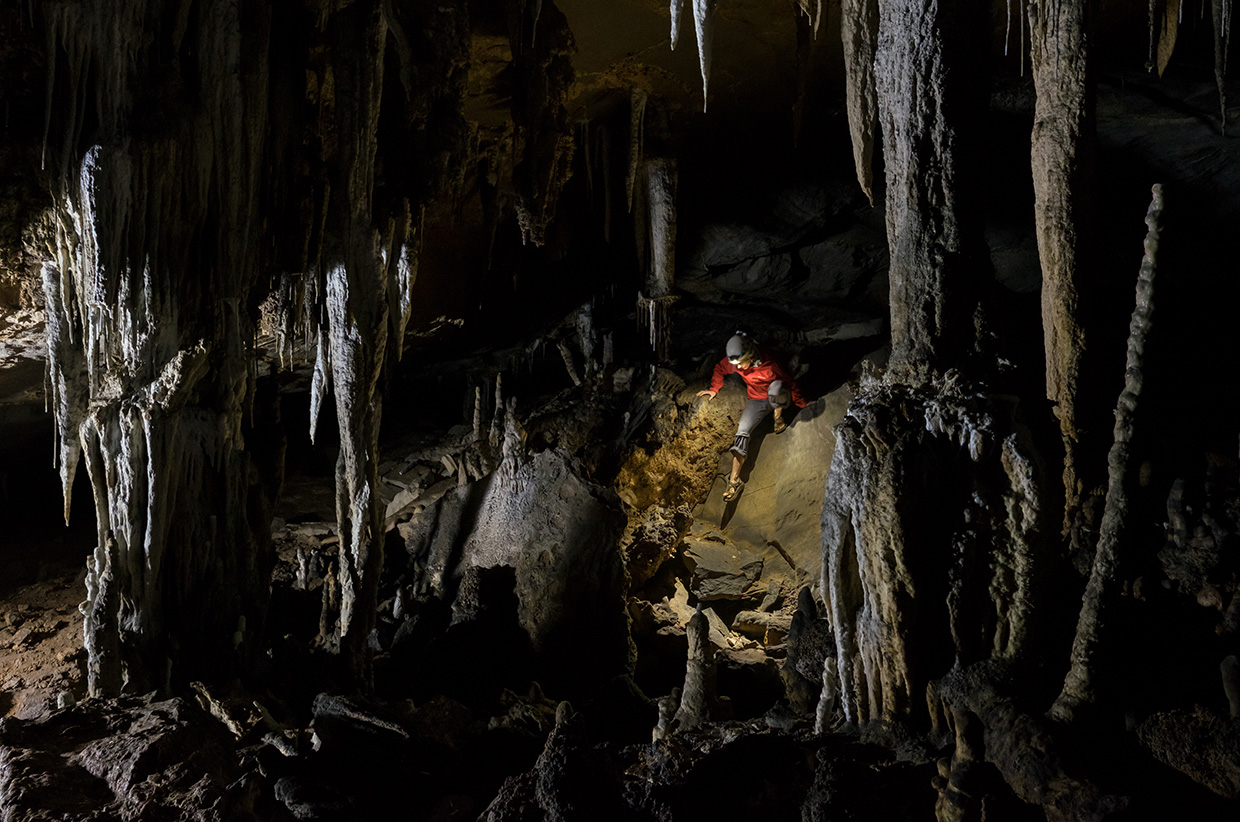
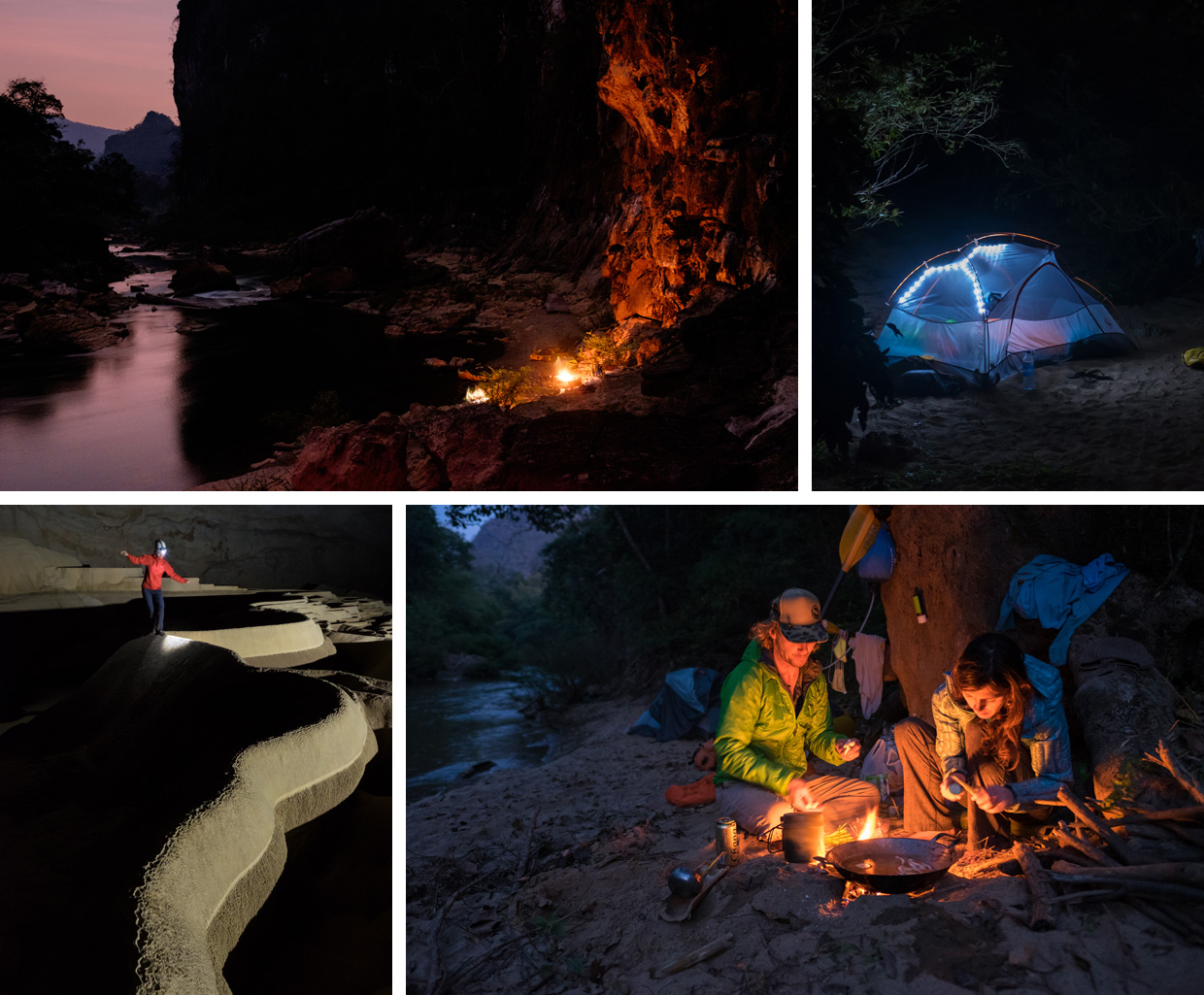

We pushed on for the next few hours. There were numerous chambers, and they were all Herculean. Drops of water splashed onto our noses from the 70m-tall ceilings. Some rooms were filled with insects that would suicide-bomb into our faces, narrowly escaping the bats we could see framed in our head lamp beams on the ceilings. We stunned ourselves, over and over, during this subterranean visual journey of elongated stalactites or pools of cosmic travertine. Even the most skilled sculptor couldn’t replicate the mounds of white calcite forming into terraces directly before our eyes. But, because of the darkness and the scale of this place, the experience was similar to peering through a toilet paper tube. In fact, it felt so bizarre, I wondered at times if maybe we had been abducted and transferred to a different planet.
Running rapids with a dim head lamp does not inspire confidence. The roar echoing off the walls made riffles in the water sound like giant waterfalls downstream. I’d miss eddies and bounce into unknown objects. Scouting in this setting was asinine. At one point, I paddled harder than I’d ever paddled before, sure of imminent death; but instead, landed my packraft onto a nearby beach. Happy to still have those cheat lines deep in that dark, scary cave.
Time wasn’t a factor in this journey, as there was no concept of night-time there. We could’ve been inside for 4 hours or 16, I’ll never know. But, after one of our many portages and after what seemed like an age, a sparkle of light appeared downstream. Were we finally exiting this womb? We paddled closer, into the final chamber where a brilliant full moon smiled down. The exit was just as pretty as the entrance. Vibrant ferns and rhododendrons hugged every nook and cranny of the walls. I breathed in the sweet scent of vegetation, happy to be back in a world with plants. We turned around to have one final view of the place we had just escaped. Whew. What a ride.
We exited the cave around 1.00am, into a quiet night. We pitched our tent on the first beach we met, our only neighbours being the absurdly skittish, night-time roaming cattle. Wringing wet like two river otters, we peeled our clothes off and launched our frigid, naked bodies into sleeping bags. Exhaustion.
Tomorrow, we’d go find a new adventure. Tomorrow, we’d retrace our steps back to a place more familiar than here. But tonight, with the melodies of crickets and cows, with the whistles and quiet hums from the cave, perhaps voices of the past, we’d dream of this surreal journey on the Xe Bang Fai.
Braden Gunem is an explorer, guide and FUJIFILM X-Photographer.
Website: bradengunem.com
Instagram: @bradengunem
Written by Claire Cripps. Instagram: @eclairecripps



